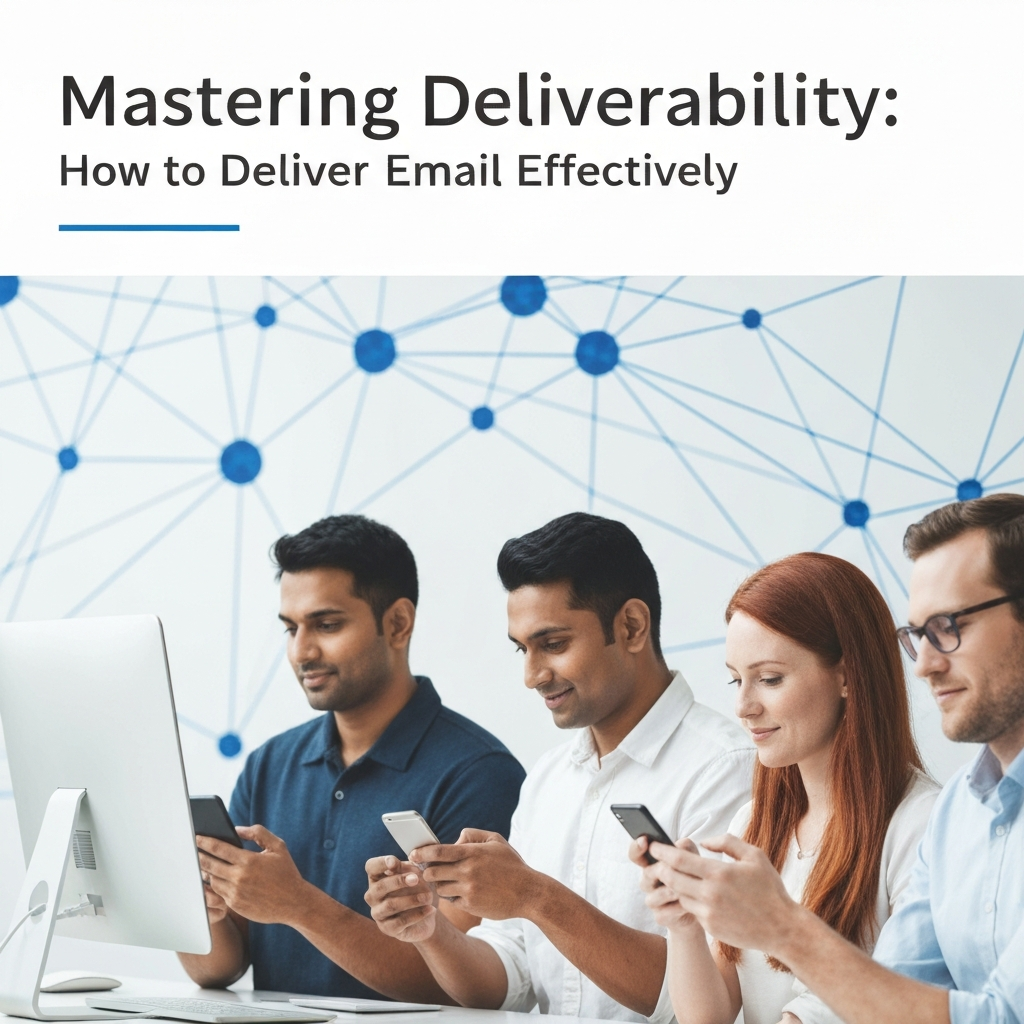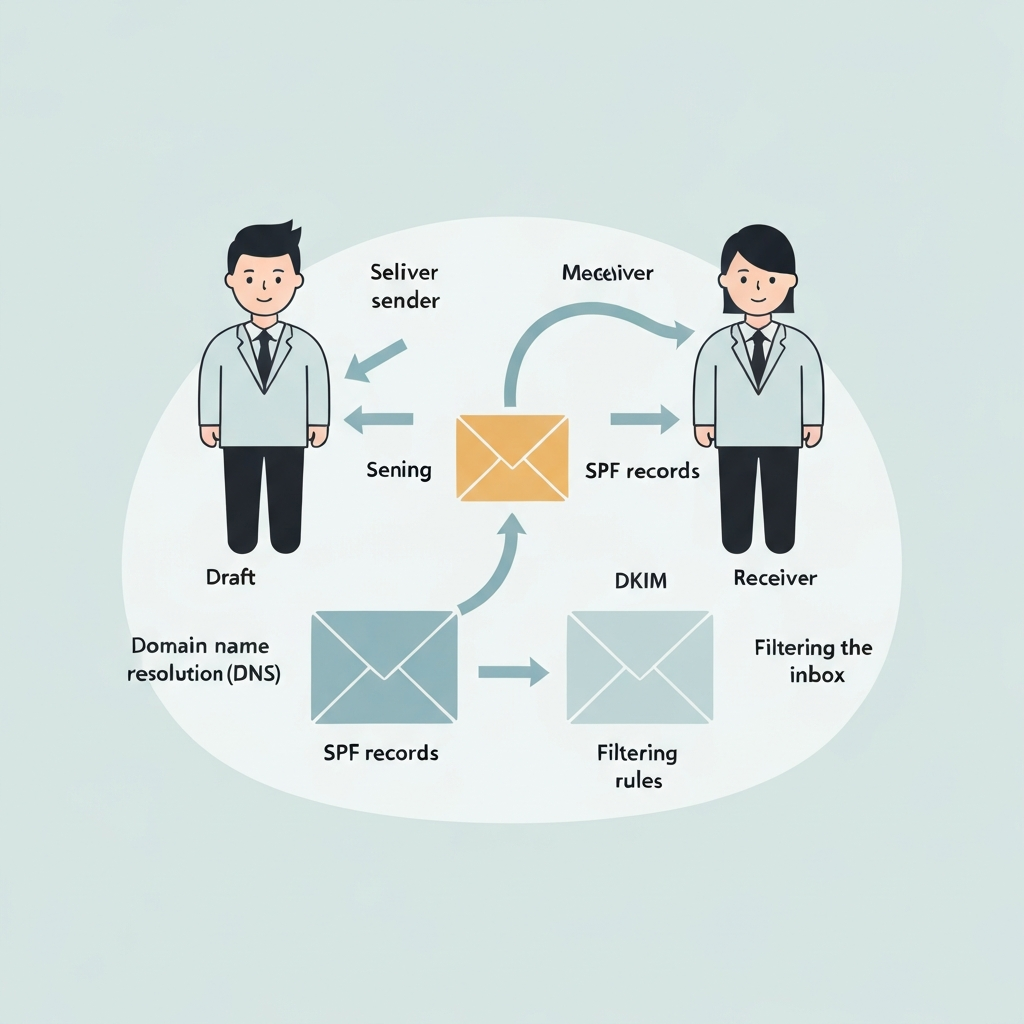Mastering Deliverability: How to Deliver Email Effectively

Ever poured your heart and soul into crafting the perfect email – a compelling sales pitch, an informative newsletter, or a crucial internal announcement – only for it to vanish into the digital ether, landing in spam or worse, not being delivered at all? This frustrating scenario is a stark reminder of the critical, yet often overlooked, aspect of digital communication: email deliverability. In today's competitive business landscape, simply sending an email is no longer enough; you need to ensure it actually reaches your intended recipient's inbox. Mastering how to deliver email effectively is not just a technical chore; it's a strategic imperative that directly impacts your marketing ROI, customer relationships, and overall business success. As highlighted by insights from sources like Data Axle, as email service providers crack down on spam and the inbox becomes more competitive, deliverability is more critical than ever.
Understanding the Core Components of Email Deliverability
At its heart, email deliverability refers to the ability of your emails to successfully reach the recipient's inbox. It's a nuanced process influenced by a complex interplay of factors. Think of it as a gatekeeper system managed by Internet Service Providers (ISPs) like Gmail, Outlook, and Yahoo. These gatekeepers evaluate every incoming email to decide whether it's legitimate, valuable, and wanted, or if it's spam, unwanted, or even malicious. The primary goal isn't just to send an email and have it accepted by the recipient's mail server; the true objective is achieving positive inbox placement. This means your message lands in the primary inbox, not in the promotions, social, or spam folders. Several key components contribute to whether your emails achieve this coveted status:- Sender Reputation: This is arguably the most significant factor. ISPs assign a reputation score to your sending IP address and domain, much like a credit score. A good reputation means your emails are trusted; a bad one means they're likely to be blocked or filtered.
- Technical Setup: Proper authentication protocols (SPF, DKIM, DMARC) are essential for proving your identity and ensuring your emails aren't spoofed.
- List Quality and Hygiene: Sending to engaged subscribers with valid email addresses is paramount. A clean, well-maintained list is a hallmark of a reputable sender.
- Content Relevance and Quality: The actual content of your email plays a role. Is it valuable, engaging, and free from spammy elements?
- Recipient Engagement: How recipients interact with your emails (opens, clicks, replies, unsubscribes) signals to ISPs whether your content is desired.
Technical Essentials: SPF, DKIM, DMARC, and Sender Reputation
The technical foundation of your email sending is non-negotiable for good deliverability. These protocols act as your email's passport, verifying its legitimacy and integrity.Sender Reputation: Your Email's Credit Score
Your email reputation is the bedrock of deliverability. ISPs use sophisticated algorithms to assess senders based on historical behavior. Key metrics they monitor include:- Bounce Rates: High rates of hard bounces (permanent delivery failures, e.g., invalid email address) or even high soft bounces (temporary issues) signal poor list hygiene.
- Spam Complaint Rates: When recipients mark your emails as spam, it's a direct red flag to ISPs. Even a small percentage can severely damage your reputation.
- Engagement Metrics: ISPs observe how recipients interact with your emails. Low open rates, click-through rates, and high unsubscribe rates can negatively impact your score.
- Spam Trap Hits: Spam traps are email addresses designed to catch spammers. If you send to them, your reputation will plummet.
- Authentication Pass Rates: Failing SPF, DKIM, or DMARC checks is a clear sign of a potential issue and hurts your reputation.
Email Authentication Protocols: SPF, DKIM, and DMARC
These three technologies work in concert to authenticate your emails and protect your domain from spoofing and phishing.- SPF (Sender Policy Framework): This DNS record specifies which mail servers are authorized to send emails on behalf of your domain. When an ISP receives an email, it checks your SPF record to see if the sending server is on the approved list. If not, the email may be flagged or rejected.
- DKIM (DomainKeys Identified Mail): DKIM adds a digital signature to your outgoing emails. This signature is verified using a public key published in your domain's DNS records. It proves that the email originated from your domain and that the message content hasn't been tampered with in transit.
- DMARC (Domain-based Message Authentication, Reporting & Conformance): DMARC builds upon SPF and DKIM. It tells receiving servers what to do if an email fails SPF or DKIM checks (e.g., quarantine or reject it) and provides reporting on these failures. Implementing DMARC with a reject policy is the strongest step to protect your domain from impersonation.
List Hygiene and Engagement: Keeping Your Audience Receptive
Beyond the technical setup, the health of your email list and the engagement of its subscribers are paramount to successful email delivery. Sending to the wrong people or sending emails that are ignored is a surefire way to damage your sender reputation.List Hygiene: The Foundation of Trust
A clean email list is one that contains only valid, interested subscribers. Neglecting list hygiene is a common pitfall that leads to increased bounce rates, higher spam complaint rates, and eventual deliverability issues. Essential practices include:- Regular Cleaning: Periodically remove invalid email addresses (hard bounces), inactive subscribers who haven't opened or clicked emails in a long time, and any addresses that hit spam traps.
- Double Opt-In: This process requires subscribers to confirm their email address after signing up, usually via a confirmation email. It ensures that the email address is valid and that the subscriber genuinely wants to receive your communications.
- Suppression Lists: Maintain and adhere to suppression lists for unsubscribed users, bounced emails, and known spam complaints.
Engagement: The Key to Inbox Placement
ISPs want to deliver emails that recipients want to see. Recipient engagement is a powerful signal of this interest. High engagement rates tell ISPs that your emails are valuable and relevant. Key email performance metrics to monitor include:- Open Rates: While not always perfectly accurate due to privacy features, a decent open rate suggests recipients are interested in your subject lines.
- Click-Through Rates (CTR): A higher CTR indicates that recipients find your content compelling enough to take action.
- Reply Rates: Direct replies are a very strong signal of engagement.
- Forward Rates: When recipients share your content, it signifies high value.
- Low Unsubscribe Rates: A low unsubscribe rate suggests your content is meeting expectations.
Leveraging Competitor Intelligence: Analyzing Their Email Deliverability
In the quest to master email deliverability, looking outward can provide invaluable insights. Analyzing your competitors' email strategies and inferring their deliverability can reveal successful tactics and potential pitfalls to avoid. This form of competitor email analysis transforms deliverability from a purely technical concern into a strategic advantage. What should you be looking for when examining competitor emails?- Subject Line Strategies: How do they craft subject lines? Are they direct, curiosity-driven, personalized, or promotional? Do they use emojis or personalization tokens? Observing their approach can help you refine your own.
- Content and Offers: What kind of content do they send? Newsletters, product updates, special offers, case studies? What is their value proposition? Understanding what resonates with a shared audience is key.
- Sending Frequency and Timing: How often do they email? At what times of day or days of the week? This can indicate their understanding of recipient habits and their own sending capacity.
- Sender Name and "From" Address: Do they use a personal name, a brand name, or a combination? This influences recognition and trust.
- Visual Design and Calls-to-Action (CTAs): How do they structure their emails visually? Are their CTAs clear and prominent?
Strategies to Improve Your Email Deliverability and Inbox Placement
Armed with an understanding of the core components and the insights gained from competitor analysis, you can implement concrete strategies to improve your own email deliverability.Content Optimization for Engagement and Trust
Your email content is your primary vehicle for communicating value.- Provide Genuine Value: Ensure every email offers something useful, informative, or entertaining to your subscribers.
- Avoid Spam Triggers: Steer clear of excessive use of all caps, multiple exclamation points (!!!), overly promotional language, and misleading subject lines. Sources like WarmupInbox advise against excessive emojis and punctuation in subject lines, as they can trigger spam filters.
- Mobile-Responsive Design: A significant portion of emails are opened on mobile devices. Ensure your emails look good and function well on all screen sizes.
- Clear Calls-to-Action (CTAs): Make it easy for recipients to know what you want them to do next.
- Visually Appealing Layout: Use attractive design and relevant images to capture attention, as suggested by EmailToolTester.
Best Practices for Email Sending
How and when you send your emails matters immensely.- Warm-Up Campaigns: If you're starting with a new IP address or domain, gradually increase your sending volume over several weeks. This allows ISPs to build trust in your sending behavior.
- Monitor Bounce and Complaint Rates: Actively track these metrics and address any spikes immediately. High rates are a strong indicator of problems.
- Segment Your Audience: Sending targeted emails to specific segments based on their interests or behavior leads to higher engagement.
- Consistent Sending Schedule: While not always feasible, a predictable sending schedule can help ISPs anticipate your mail flow.
The Role of AI in Monitoring and Optimizing Deliverability
The complexity of email deliverability, coupled with the sheer volume of data involved, makes it a prime area where Artificial Intelligence (AI) can provide significant advantages. AI is transforming how businesses approach their email strategies, offering powerful tools for monitoring, analysis, and optimization. AI can process vast datasets from your email campaigns – including sending patterns, engagement metrics, bounce rates, spam complaints, and even content analysis – far more efficiently than human analysts. This allows for the identification of subtle trends and anomalies that might otherwise go unnoticed, helping you proactively address potential deliverability issues before they escalate. For instance, AI can detect shifts in recipient behavior that might indicate a declining sender reputation or content that is starting to underperform. Furthermore, AI excels at personalization. By analyzing subscriber data, AI can help segment your audience more effectively and tailor content to individual preferences. As we've discussed, higher engagement directly correlates with better email deliverability. AI-powered personalization engines can help create more relevant and compelling messages, leading to improved open rates, click-through rates, and ultimately, better inbox placement. Predictive analytics, a subset of AI, can forecast potential deliverability problems based on current trends. This allows marketing and IT teams to take preventative measures. Automation powered by AI can also streamline crucial tasks like list cleaning, identifying inactive subscribers, and even suggesting optimal sending times or subject line variations for different audience segments. Modern solutions are integrating AI to assist professionals at all levels. Tools like an ai executive assistant can significantly enhance your email strategy by analyzing performance metrics, identifying patterns in recipient engagement, and even suggesting content optimizations to ensure your messages consistently achieve high inbox placement. This level of intelligent assistance helps transform raw data into actionable insights, making the complex world of deliverability more manageable and effective. Leveraging AI for your email communications, whether it's through specialized tools or integrated features within platforms like those for AI for Gmail, is becoming a cornerstone of competitive email marketing.Conclusion: Achieving Consistent Email Success Through Deliverability Mastery
Mastering email deliverability is not a one-time task; it's an ongoing commitment to best practices, technical diligence, and audience-centric communication. From ensuring your technical authentication is flawless with SPF, DKIM, and DMARC, to diligently maintaining list hygiene and fostering genuine subscriber engagement, every step contributes to your ability to effectively deliver email. By understanding your email reputation, implementing sound email sending best practices, and leveraging sophisticated tools, including those powered by AI, you can significantly improve your inbox placement. Furthermore, incorporating competitor email analysis provides a strategic edge, allowing you to learn from the broader market and refine your approach. Ultimately, consistent success in email marketing hinges on your ability to ensure your messages reach their intended destination. Prioritize deliverability, and watch your email performance metrics soar, driving better results for your business.


